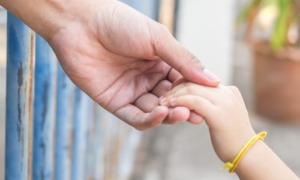October marked Al and Tipper Gore’s 11th Annual Family Reunion in Nashville. The theme of this year’s gathering, which drew more than 1,000 people, was “Families and Youth” – debunking the myth that teens hate their parents and parents merely tolerate their teens.
The conference plenary sessions spotlighted the impressive stories of teens and young adults who are making significant contributions to their communities. The obligatory parade of experts reminded participants about research showing that most adolescents don’t grow into monsters, most want support and guidance from their families, and many are in families that need support themselves.
Good stuff. But I left wanting more.
I wanted to talk more about families with youth. What do they need, do, offer and get? How are they different from families with young children?
Families with youth need support as much or more than do families with young children. But they don’t get it. Immigrant families, low-income families and families of color are particularly at risk of traversing the adolescent years without adequate financial, social or cultural support.
Income support programs that help low-income families support their children’s activities drop off precipitously when those children reach 13. The assumption is that once children don’t need constant supervision, they don’t need anything. That puts families in a bind.
Sustainable wage calculations reinforce this myth. In suburban Rockland County, N.Y., the official sustainable wage for a single parent with two infants is $48,000, dropping to $42,000 with two 6- to 12-year-olds, and to $28,000 with two teens.
Social support services for low-income families drop off even earlier. Family support programs primarily target families with young children. But youth development programs target youth outside of their families – typically, older youth. Programs like New York City-based Alianza Dominicana, which believe that youth, family and community development cannot be separated, are few and far between.
The Annie E. Casey Foundation has quietly promoted Alianza and other organizations that practice “family-centered youth development,” while steadfastly criticizing youth development programs that assume that family involvement is optional.
Shifting to serve “families with youth” as a package might challenge the budgets, policies and practices of both family support and youth development programs. But Casey’s constant drumbeat on this point may finally be pushing discussions beyond pat answers.
Social and recreational activities for low-income families with teens are woefully inadequate. Families with older youth need
to do things together at least as much as do families with young children. But they don’t.
Once young people have their own means of transportation, family cohesiveness requires extra vigilance. The families and their teens eat together less; they go out together less; they find fewer activities and places that are appropriate for everyone.
Camp Fire’s family camps have struck a chord because they create spaces where families can come as families, get involved as individual learners and teachers, see their family members interact with others (a powerful observation), see other families interact with each other and make new youth and adult friends within a circle of known people. (Places of worship know the power of this model well.)
And families with youth have a power that families with young children do not. They have more full-bodied, full-functioning members who can help each other and help their communities.
Families with youth can turn multiple part-time or minimum-wage jobs into decent family incomes. Families with youth can strengthen bonds while they contribute to their communities. They have more avenues for learning new skills that the family needs.
Community IMPACT! Nashville, for example, set out to help young people save for college by teaching them financial literacy skills. It netted young leaders who have helped their families plan budgets and is waging war on check-cashing vendors that eat away at family earnings.
The media have painted adolescence as a time when parents’ roles are reduced to financing and supervision. Youth organizations, on the other hand, advocate, mentor, instruct, link and involve youth, and expect all to succeed.
But so do families. It really is time to re-examine what family-centered youth development means to youth programs, schools and other organizations whose interactions with families are too frequently reduced to paying fees and signing forms. It is time to put the “amilie” back into our understanding of what families with teens do with their youth:
Financing. Advocacy. Mentoring. Instructing. Linking. Involving. Expectations. Supervising. This is what families at their best are about. This is why they need the support of youth workers.
Karen Pittman is executive director of the Forum for Youth Investment. Contact: karen@iyfus.org.




























